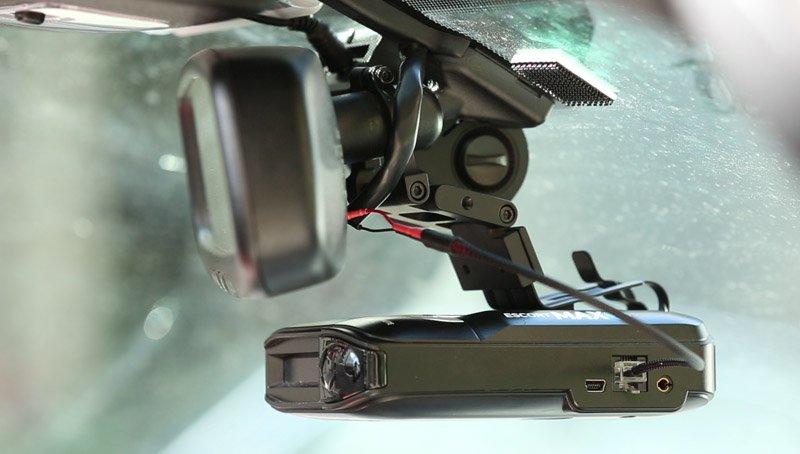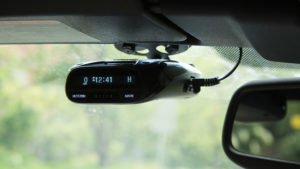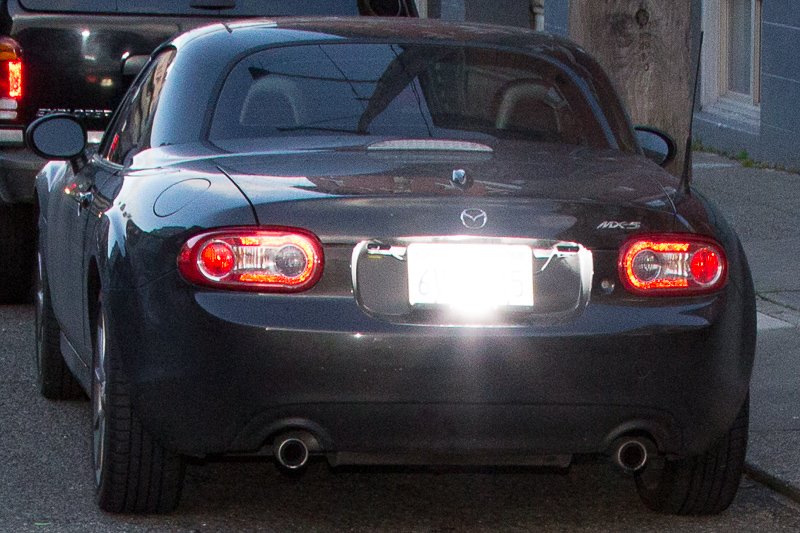So the most common question people ask is “What is the best radar detector?” To help answer this question, I have a radar detector guide I put together for you to help go over the main highlights of the best radar detectors on the market. The link is at the top of this website. To help simplify things even further, I’ve put together a flowchart you can follow to help determine what’s best for you based on your own personal needs, preferences, and budget. (Note: I’ve done one of these previously, but a lot has changed since with new detectors and updates to old ones so this chart has been updated.)
For more information about any decision or radar detector listed below, scroll down below the flowchart.

Windshield Mount Radar Detectors:
Escort Redline:
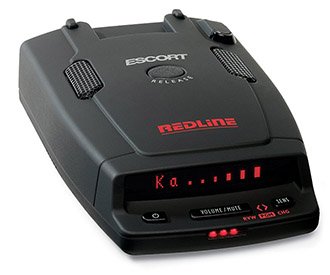 When it come to performance, this is the benchmark that all other detectors are compared against. It offers long range monster performance to help you detect radar way up ahead of you, giving you plenty of time to slow down before your speed can be acquired. It is also immune to radar detector detectors so it’s a popular option for when an undetectable detector is required. The downside is that its filtering abilities are quite limited so you’ll get a fair number of false alerts. As such, it helps to pair it with your phone and run Escort Live so you can teach it where stationary false alerts are from shopping centers and speed signs. It’s not very effective at filtering out false alerts from cars with blind spot monitoring systems so if you’re in a pretty populated area, you may want to consider another detector. The Redline’s specialty is highway driving, especially in more rural areas.
When it come to performance, this is the benchmark that all other detectors are compared against. It offers long range monster performance to help you detect radar way up ahead of you, giving you plenty of time to slow down before your speed can be acquired. It is also immune to radar detector detectors so it’s a popular option for when an undetectable detector is required. The downside is that its filtering abilities are quite limited so you’ll get a fair number of false alerts. As such, it helps to pair it with your phone and run Escort Live so you can teach it where stationary false alerts are from shopping centers and speed signs. It’s not very effective at filtering out false alerts from cars with blind spot monitoring systems so if you’re in a pretty populated area, you may want to consider another detector. The Redline’s specialty is highway driving, especially in more rural areas.
Click here to purchase an Escort Redline.
Beltronics Magnum:
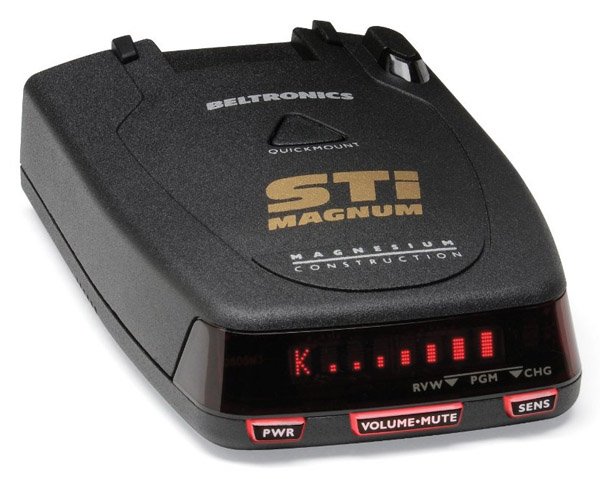 The Magnum is essentially an Escort Redline with a different name, case, and sounds. However, there are two critical differences under the hood. 1) Performance and maximum range is just slightly less than the Redline, but still one of the very best detectors on the market. 2) Its ability to filter out cars with blind spot monitoring systems is slightly better than the Redline. Since its filtering is better than the Redline’s, it’s the preferred choice for people who want high end performance while offering the ability to filter more of the false alerts emitted from other newer vehicles nearby.
The Magnum is essentially an Escort Redline with a different name, case, and sounds. However, there are two critical differences under the hood. 1) Performance and maximum range is just slightly less than the Redline, but still one of the very best detectors on the market. 2) Its ability to filter out cars with blind spot monitoring systems is slightly better than the Redline. Since its filtering is better than the Redline’s, it’s the preferred choice for people who want high end performance while offering the ability to filter more of the false alerts emitted from other newer vehicles nearby.
Click here to purchase the Beltronics Magnum.
Escort Live:
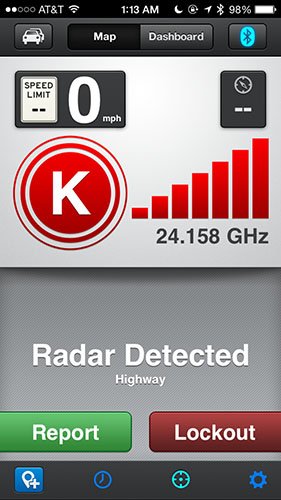 Both the Redline and the Magnum lack a GPS chip to give them the ability to learn where stationary false alerts around town are located and mute them for you in the future. To compensate for this, you can buy a power cable with a bluetooth chip inside it, pair your phone to your detector using the bluetooth cable, and use your phone’s GPS and the app to tell your detector to manually mark false alerts and tell your detector to mute next time it sees this signal (aka lock them out). This makes the detector much more useful around town.
Both the Redline and the Magnum lack a GPS chip to give them the ability to learn where stationary false alerts around town are located and mute them for you in the future. To compensate for this, you can buy a power cable with a bluetooth chip inside it, pair your phone to your detector using the bluetooth cable, and use your phone’s GPS and the app to tell your detector to manually mark false alerts and tell your detector to mute next time it sees this signal (aka lock them out). This makes the detector much more useful around town.
There’s other benefits to running the app as well such as making it easier to change your RD’s settings, using your phone as a secondary display for your detector, alerting you to redlight cameras and speedcameras, or sharing realtime alerts to/from the cloud. The cloud-based stuff is definitely cool, but you can run Waze on your phone which has far more users and thus many more alerts. Personally I find the lockouts to be the most useful feature in Escort Live.
Previously there were separate cables for Android and iOS users, but now you can get a cable that works for both platforms.
Click here to purchase an Escort Live cig. lighter cable for Android or iOS.
Uniden DFR6:
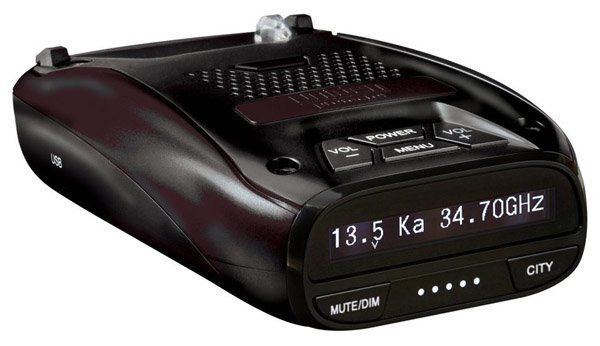 This is the least expensive radar detector I would recommend. It offers long range performance that in some cases can rival detectors at double to triple the price. It also features one of the best blind spot filters on the market as well. There are less expensive detectors out there, but they don’t offer nearly the sensitivity and filtering abilities as the DFR6 so if you’re on a tight budget, this is the least expensive detector I would recommend.
This is the least expensive radar detector I would recommend. It offers long range performance that in some cases can rival detectors at double to triple the price. It also features one of the best blind spot filters on the market as well. There are less expensive detectors out there, but they don’t offer nearly the sensitivity and filtering abilities as the DFR6 so if you’re on a tight budget, this is the least expensive detector I would recommend.
Now it is missing a GPS chip so it doesn’t offer all the functionality you’d want around town. If you do a lot of driving in the city, I would recommend the DFR7 instead. The DFR6 is best suited as a highway detector.
Click here to purchase a Uniden DFR6.
Uniden DFR7:
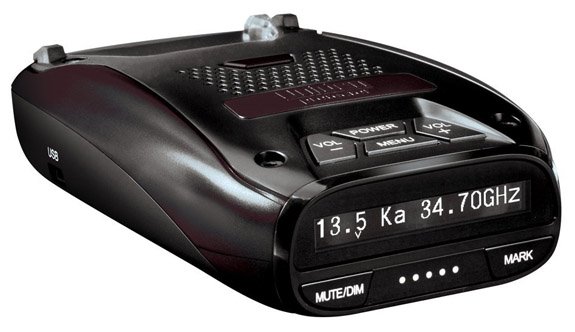 The DFR7 offers the best bang-for-the-buck and is a very well-rounded detector. You’ve got both great performance and the ability to filter out many cars with annoying blind spot monitoring systems (something many detectors struggle at these days) plus it adds a GPS chip to give you the features you’d want around town such as the ability to learn and lock out known false alerts, red light camera / speedcamera alerts, and the ability to simply mute the detector at low speeds to really quiet things down. This makes the detector far more manageable around town and at just $299, it’s hard to go wrong.
The DFR7 offers the best bang-for-the-buck and is a very well-rounded detector. You’ve got both great performance and the ability to filter out many cars with annoying blind spot monitoring systems (something many detectors struggle at these days) plus it adds a GPS chip to give you the features you’d want around town such as the ability to learn and lock out known false alerts, red light camera / speedcamera alerts, and the ability to simply mute the detector at low speeds to really quiet things down. This makes the detector far more manageable around town and at just $299, it’s hard to go wrong.
Click here to purchase a Uniden DFR7.
Escort Passport Max:
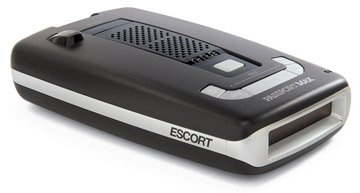 This is the easiest to use, relatively inexpensive city detector. It’s got all the core features you’d want like reasonable performance and the ability to filter out many false alerts. It’s similar to the DFR7 except it can learn and lockout false alerts for you automatically so it requires less user intervention. I would give the edge in performance and filtering effectiveness to the Uniden, but the Max’s display is nicer, the redlight camera database is updated much more frequently, and the customer service is better as well. As a plug-and-play detector, it’s a recommended pick for being easy to use, especially if you don’t want to be a radar detector expert.
This is the easiest to use, relatively inexpensive city detector. It’s got all the core features you’d want like reasonable performance and the ability to filter out many false alerts. It’s similar to the DFR7 except it can learn and lockout false alerts for you automatically so it requires less user intervention. I would give the edge in performance and filtering effectiveness to the Uniden, but the Max’s display is nicer, the redlight camera database is updated much more frequently, and the customer service is better as well. As a plug-and-play detector, it’s a recommended pick for being easy to use, especially if you don’t want to be a radar detector expert.
Click here to purchase an Escort Passport Max.
Escort Max360:
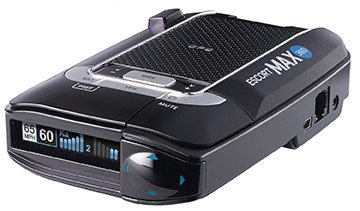 This is the most feature-packed, plug-and-play, all the bells and whistles detector. It’s got arrows like the V1, but it doesn’t require a cell phone to get all the features so it’s a self-contained package, better for traveling, and significantly easier to set up. It costs more than the V1 and its bluetooth module, but if you want all the bells and whistles in an easy to use package, this is the one to get. The Max360 is Escort’s best selling detector and it’s no surprise.
This is the most feature-packed, plug-and-play, all the bells and whistles detector. It’s got arrows like the V1, but it doesn’t require a cell phone to get all the features so it’s a self-contained package, better for traveling, and significantly easier to set up. It costs more than the V1 and its bluetooth module, but if you want all the bells and whistles in an easy to use package, this is the one to get. The Max360 is Escort’s best selling detector and it’s no surprise.
Click here to purchase a Max360.
Valentine One:
 This has long been the go-to detector among driving enthusiasts. It’s known for having arrows (the Max360 and others now offer this too) and offers great performance and blind spot filtering capabilities. It does require a fairly considerable amount of setup and configuration, it all but needs a cell phone and an app to add the GPS functionality, advanced display, and to take full advantage of the performance and configuration options that you wouldn’t otherwise get so it’s awesome for someone who loves to tweak and tinker around with a radar detector. It offers a lot of control and a lot of information to the user, more than any other detector. It’s great at letting you know what’s going on around you and that’s what I love best about it.
This has long been the go-to detector among driving enthusiasts. It’s known for having arrows (the Max360 and others now offer this too) and offers great performance and blind spot filtering capabilities. It does require a fairly considerable amount of setup and configuration, it all but needs a cell phone and an app to add the GPS functionality, advanced display, and to take full advantage of the performance and configuration options that you wouldn’t otherwise get so it’s awesome for someone who loves to tweak and tinker around with a radar detector. It offers a lot of control and a lot of information to the user, more than any other detector. It’s great at letting you know what’s going on around you and that’s what I love best about it.
Click here to purchase a V1.
YaV1:
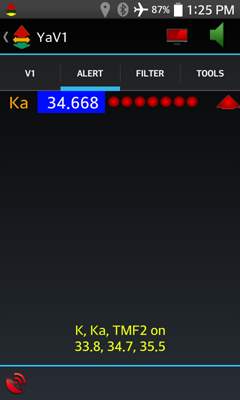 This is an Android-only app that allows you to take full advantage of your V1, custom program it, and add important GPS-based filters like GPS lockouts and low speed muting. It’s the definitive V1 app to have and I’d consider it basically mandatory for using the V1 if you’re an Android user. Note: You need a newer version of the V1 (3.892 or newer) plus the Android only bluetooth module (V1C) to use YaV1. The iOS bluetooth module (V1C LE) is now compatible with Android too, but if you want to use YaV1, you need to use the V1C.
This is an Android-only app that allows you to take full advantage of your V1, custom program it, and add important GPS-based filters like GPS lockouts and low speed muting. It’s the definitive V1 app to have and I’d consider it basically mandatory for using the V1 if you’re an Android user. Note: You need a newer version of the V1 (3.892 or newer) plus the Android only bluetooth module (V1C) to use YaV1. The iOS bluetooth module (V1C LE) is now compatible with Android too, but if you want to use YaV1, you need to use the V1C.
Click here to download YaV1.
Click here to buy the V1C bluetooth module.
V1Driver:
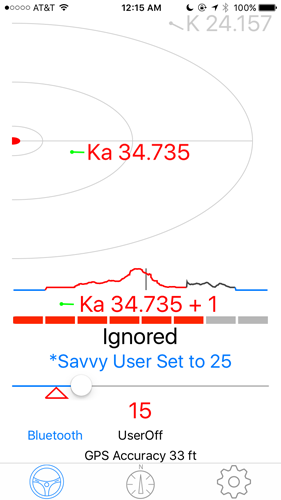 V1Driver is an iPhone-only app that adds important GPS functionality to your V1 such as GPS lockouts and low speed muting. It really helps quiet the detector down around town and if you use an iPhone, it’s the app to get with your V1. You’ll still need the factory app for programming your V1 initially, but for day-to-day use, you’ll want to run V1Driver to add the filtering and muting functionality. It can be run actively on your phone or simply run in the background, even while the phone is in your pocket, and your V1 will still benefit nicely from its muting functionality.
V1Driver is an iPhone-only app that adds important GPS functionality to your V1 such as GPS lockouts and low speed muting. It really helps quiet the detector down around town and if you use an iPhone, it’s the app to get with your V1. You’ll still need the factory app for programming your V1 initially, but for day-to-day use, you’ll want to run V1Driver to add the filtering and muting functionality. It can be run actively on your phone or simply run in the background, even while the phone is in your pocket, and your V1 will still benefit nicely from its muting functionality.
Click here to purchase V1Driver.
Click here to buy the V1C LE bluetooth module.
Radenso Pro SE:
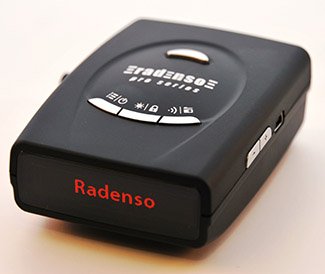 If you do a lot of highway driving and want high end performance similar to what the Redline and Magnum offer, but you also drive in the city and want the ability to learn and filter out false alerts and alert you to redlight cameras / speed cameras without having to putz around with cell phones, the Radenso Pro SE is the one to get. It’s a high end city/highway detector. It admittedly still has some quirks like the lockouts take a few attempts to work and the frequency display isn’t as precise as other options, but it’s a well-rounded high performing detector that is quickly becoming more and more popular.
If you do a lot of highway driving and want high end performance similar to what the Redline and Magnum offer, but you also drive in the city and want the ability to learn and filter out false alerts and alert you to redlight cameras / speed cameras without having to putz around with cell phones, the Radenso Pro SE is the one to get. It’s a high end city/highway detector. It admittedly still has some quirks like the lockouts take a few attempts to work and the frequency display isn’t as precise as other options, but it’s a well-rounded high performing detector that is quickly becoming more and more popular.
Click here to purchase a Radenso Pro SE.
Remote Radar Detectors:
Stinger VIP:
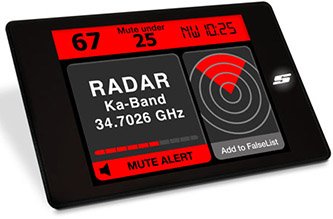 If you want the most feature-packed remote mounted radar detector. It offers high end performance, effective blind spot filtering, automatic GPS lockouts, doesn’t require a phone to get everything working, immunity from radar detector detectors, redlight/speedcamera alerts, and so on. The detector still has some quirks that need to be ironed out and it’s taking a while to become fully refined, but nonetheless, it’s the most advanced and capable radar detector on the market. The standard setup comes with a single front facing antenna like most detectors. You also have the option of adding a second rear facing antenna to give you directional information (aka arrows) for added information. I run the two antenna version because I love the added situational awareness, but honestly the single antenna version works great too.
If you want the most feature-packed remote mounted radar detector. It offers high end performance, effective blind spot filtering, automatic GPS lockouts, doesn’t require a phone to get everything working, immunity from radar detector detectors, redlight/speedcamera alerts, and so on. The detector still has some quirks that need to be ironed out and it’s taking a while to become fully refined, but nonetheless, it’s the most advanced and capable radar detector on the market. The standard setup comes with a single front facing antenna like most detectors. You also have the option of adding a second rear facing antenna to give you directional information (aka arrows) for added information. I run the two antenna version because I love the added situational awareness, but honestly the single antenna version works great too.
Click here to purchase a Stinger VIP. (Use the coupon code “VortexRadar” to save 10%)
Beltronics STi-R Plus (standalone):
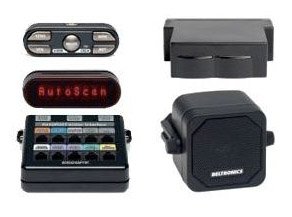 If you want a well-rounded remote detector like the Stinger but don’t want to pay for it, the STi-R Plus is a great option. It offers many of the same features as the Stinger and is surprisingly comparable in terms of performance, you get your RLC alerts, low speed muting, automatic GPS lockouts without a phone, RDD immunity, and so on. The biggest difference I’ve found is that it’s not as good as the Stinger at filtering out blind spot falses so you will get more false alerts in practice. It’s also not doing to receive any more updates it looks like while the Stinger continues to be updated and improved, but it’s kind of like a budget Stinger without quite the level of blind spot filtering abilities.
If you want a well-rounded remote detector like the Stinger but don’t want to pay for it, the STi-R Plus is a great option. It offers many of the same features as the Stinger and is surprisingly comparable in terms of performance, you get your RLC alerts, low speed muting, automatic GPS lockouts without a phone, RDD immunity, and so on. The biggest difference I’ve found is that it’s not as good as the Stinger at filtering out blind spot falses so you will get more false alerts in practice. It’s also not doing to receive any more updates it looks like while the Stinger continues to be updated and improved, but it’s kind of like a budget Stinger without quite the level of blind spot filtering abilities.
Click here to purchase a Beltronics STi-R Plus.
Escort 9500ci head for the ALP:
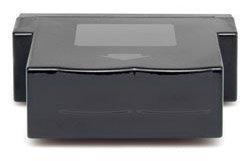 If you like the idea of the high end performance for highway driving, the 9500ci is going to be a top pick for long range monster detection. The standalone 9500ci is like the STi-R Plus except you get Escort’s not so great Laser ShifterPro laser jammers. If you get the AntiLaser Priority instead (much better laser jammer), you can actually get a 9500ci head and plug it into your ALP and get the same level of performance. You won’t have the GPS lockouts so it’s really best suited as a highway detector, and you won’t get the RLC alerts without using an app like Waze, but it’s a great way to get high end performance for even less than the cost of a standalone STi-R Plus. This is especially good in places like California where you can turn off K band, not have to deal with filtering K falses, and run with Ka only.
If you like the idea of the high end performance for highway driving, the 9500ci is going to be a top pick for long range monster detection. The standalone 9500ci is like the STi-R Plus except you get Escort’s not so great Laser ShifterPro laser jammers. If you get the AntiLaser Priority instead (much better laser jammer), you can actually get a 9500ci head and plug it into your ALP and get the same level of performance. You won’t have the GPS lockouts so it’s really best suited as a highway detector, and you won’t get the RLC alerts without using an app like Waze, but it’s a great way to get high end performance for even less than the cost of a standalone STi-R Plus. This is especially good in places like California where you can turn off K band, not have to deal with filtering K falses, and run with Ka only.
Click here to purchase a 9500ci head for your ALP. (Edit: No longer available.)
You will also need an RGv2 module for your ALP.
Radenso HD+ for the ALP:
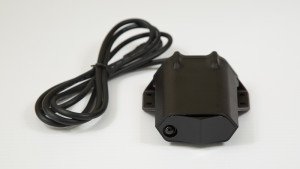 If you like the idea of the 9500ci plugged into your ALP but you want K band enabled, take a look at the Radenso HD+. It offers comparable performance but much better blind spot filtering, so it’s a better choice if K band detection is necessary. You won’t get your GPS lockouts and you will lose RDD immunity, but it’s a better choice for most places where K band is still in active use.
If you like the idea of the 9500ci plugged into your ALP but you want K band enabled, take a look at the Radenso HD+. It offers comparable performance but much better blind spot filtering, so it’s a better choice if K band detection is necessary. You won’t get your GPS lockouts and you will lose RDD immunity, but it’s a better choice for most places where K band is still in active use.
Click here to purchase a Radenso HD+ for your ALP.
You’ll also want an RGv2 module. A GPS antenna, HiFi module, and Bluetooth module are helpful too.
Net Radar w/ bluetooth for the ALP:
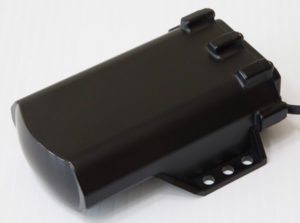 If you want a remote to pair with your ALP and you want the GPS lockouts, get the new Net Radar. It integrates nicely with the ALP and if you pair it with your phone using the Bluetooth module, you can run the app on your phone and manually teach the detector where the false alerts are so it can mute them for you in the future. None of the other ALP remotes can do this. Performance isn’t up to par with the 9500ci or Radenso HD+, but it’ll still offer you plenty of range in most situations so it’s a great all-around pick. Additionally you can add a second rear antenna if you want directional information (arrows) or even a third antenna if you need MRCD detection as well.
If you want a remote to pair with your ALP and you want the GPS lockouts, get the new Net Radar. It integrates nicely with the ALP and if you pair it with your phone using the Bluetooth module, you can run the app on your phone and manually teach the detector where the false alerts are so it can mute them for you in the future. None of the other ALP remotes can do this. Performance isn’t up to par with the 9500ci or Radenso HD+, but it’ll still offer you plenty of range in most situations so it’s a great all-around pick. Additionally you can add a second rear antenna if you want directional information (arrows) or even a third antenna if you need MRCD detection as well.
Click here to purchase a Net Radar antenna for your ALP.
Click here to purchase a bluetooth module for your ALP.
Decisions:
Windshield mount vs. Remote mount?
There’s two forms that a radar detector can come in. A little box that mounts on your windshield or a hidden custom installed detector installed in your grill. Each option has pros and cons. Let’s take a look.
Windshield mount benefits: Easier to install, less expensive, cheaper to install, more options for detector, can easily be moved between vehicles, easy to remove if you sell your vehicle, almost plug and play install, can be hardwired for a cleaner install without using your vehicle’s cig. lighter plug.
Remote mount benefits: Hidden install, not visible to potential thieves or police, nothing to take down and take off your windshield when you park, cleaner look in the cabin, no cig. lighter cable hanging down your dash, cig. lighter port is free for other devices, no black box on your windshield, looks much more OEM.
Do you live in VA or D.C.?: (Magnum, Redline, STi-R Plus, 9500ci, or Stinger VIP)
In Virginia and Washington D.C. (as well as every province in Canada except BC, AB, & SK), radar detectors are illegal and in those areas, radar detector detectors are used. Some people choose detectors with special stealth technology that makes them fully undetectable by radar detector detectors. Those detectors include the Magnum, Redline, STi-R Plus, 9500ci, and Stinger VIP. All the other detectors are detectable at varying distances.
Note: Radar detectors are also illegal on military bases anywhere in the country or in any commercial vehicle over 10,000 lbs or any vehicle over 18,000 lbs.
Budget?
Radar detectors can help you avoid the cost of not only a speeding ticket, court costs, lawyer fees, and especially insurance premium hikes, not to mention the headache and stress of dealing with a ticket, so it’s worth making an investment in a quality product. $300 or so will get you a solid mid-tier detector. You can occasionally find some good detectors below that, but it’s not worth trying to cheap out too far, especially considering the issues you’re trying to avoid. Above that price you’ll start to run into the top tier detectors that offer the highest level of protection.
Do you drive in the city much?
If you drive in the city, you’ll want some features like GPS lockouts so the detector can learn where known stationary false alerts are located from speed signs and automatic door openers in grocery stores and drug stores. Using GPS, your detector can learn where these falses are located so it mutes them for you every time you drive past. That feature is pretty much a must-have feature in town. It’s also nice having low-speed muting so your detector is quiet when you’re driving around slowly or sitting at a red light. The GPS can also alert you to redlight cameras or speed cameras in the area, so if you drive a lot in the city, a GPS based detector is very handy. Some detectors have a GPS chip built in while others will pair with your cell phone over bluetooth and require you to run an app on your phone to use your phone’s GPS to add that functionality.
Do you want arrows to help locate the threat?
Radar detectors are all about helping you locate the source of the threat and know when you’re in danger. Is the cop in front of you or behind? Did you pass a cop but there’s a second one up ahead? Arrows can add some very helpful information in practice and while most of the time you can avoid a speeding ticket without arrows, they are a great addition to your radar detector if you want to better understand what’s going on around you.
Plug-and-play integrated RD or tinker with your cell phone? (Max360 vs. V1 w/ app)
Most people aren’t radar detector experts and don’t want to be. If that’s the case for you and you want an easy to use radar detector, go for one like the Max360 which is plug and play. It requires minimal setup, the GPS chip is built into the detector so it doesn’t rely on your phone, and you can put it on your windshield and you’re ready to go. However, if you’re the type of person who likes to tinker around with tech products and you want more control, the V1 is a great choice. You get a lot more fine tuned adjustments and even more information if you pair it with your cell phone and run YaV1 or V1Driver. The setup is more complicated with the V1 and you’re really going to need your phone and an app whenever you’re out driving, but that combo offers you the highest level of control if that’s what you prefer. For most, and even for people who just want to focus on driving and things other than their radar detector, a plug and play detector is the way to go.
iOS or Android?
Pretty self explanatory. Whichever phone you regularly use, get the setup that matches your phone. A quick note about the different platforms:
Escort Live works better on iOS than on Android. iOS is pretty smooth while Android is kinda buggy.
On the V1 you have good options for both now. I’m an iOS guy in general and V1Driver is really easy to use and fantastic as a plug and play detector to add the GPS functionality to your V1. However, I still run a dedicated Android phone for YaV1 because I prefer the additional customizability and alert presentation since it shows me all the information for every signal. It’s not as automated, but it gives me a ton of useful information and so I love that. However, for simple driving, the iOS option is great and really offers the core features people would need and works great.
Plug-and-play detector? (Max vs. DFR7)
Most people really want a simple and easy to use detector. Put it on your windshield and it basically does the rest. Some detectors require more user intervention than others. One perfect example is the Max and the DFR7. They’re very comparable detectors. Both have the ability to use GPS to learn and lock out false alerts, but due to patent issues, the Max can do it automatically while the DFR7 requires you to do it manually. So the Max is great because you can install it and let it do its thing and for most people who don’t want to try and figure out if the beeping alert should be locked out, it’s a nice benefit. If my mom wanted to use a radar detector, and she’s not very tech savvy, I’d want a more automated detector for her.
Long range, monster performance or generally sufficient range? (Redline, Magnum, Radenso Pro SE vs. Max & DFR7
If you demand the highest level of performance because you drive in rural terrain, whether it’s on the highways, it’s on backroads with lots of radar absorbing hills, curves, and trees, or if you live in flat open deserts where your only shot at picking up radar is getting notified when a car several miles ahead of you is being clocked, then you’ll want a high performing detector that offers monster range. If you’re willing to sacrifice all out range for sufficient range in most situations while adding some other benefits like improved false alert filtering, a better experience for city driving (lockouts, redlight camera alerts, etc.), a more well-rounded detector would be a better choice over a long range specialist.
Willing to pair your detector to your phone? (Redline or Magnum vs. Radenso Pro SE)
Some detectors like the Radenso Pro SE have a GPS chip built in so they can give you the GPS functionality right out of the box. Others like the Redline and Magnum lack the GPS chip, but they have the ability to pair with your cell phone (if you add a bluetooth module) and use your phone’s GPS and run an app to add that functionality. It’s more hoops to jump through to use a phone every time, but there may be other benefits to using a detector without GPS built in such immunity from radar detector detectors, you want to pair your detector with your phone to get realtime alerts to/from other drivers in the cloud, and so on.
Mostly rural driving or lots of other cars around? (Redline vs. Magnum)
The Redline and Magnum are virtually the same detector, just with a different name, case, and sounds. However, there are two small but important differences. Both detectors feature a low noise amplifier to help boost the strength of weak signals and get longer range, but the Redline’s LNA is slightly better and so it has slightly better range. Realistically speaking though, both detectors offer outstanding performance. However, when it comes to filtering out false alerts from blind spot cars, the Magnum is more effective once you enable the filters. It’s for that reason that if you have a bunch of other cars around, the Magnum would be the preferable choice. If you’re in mostly rural areas where you don’t need the improved filtering, go for the Redline for maximum performance.
Basic, fully featured, or top end RD for max performance? (9500ci head, STi-R Plus, or Stinger VIP)
If you want a detector that gives you outstanding range, especially for rural and highway driving, you can plug a 9500ci head into your AntiLaser Priority laser jammer and get phenomenal performance in a remote detector without spending a ton of cash.
If you want high end performance but you also want improved filtering abilities in the city with GPS lockouts and whatnot, the standalone STi-R Plus is a great all-around package.
If you want everything including really good blind spot filtering, the ability to get a detector with arrows, and basically all the bells and whistles, the Stinger VIP is the one to get
Do you need/want the top end detector? (Stinger VIP vs. the rest)
If you’re the type of person who wants to go for the best option possible, the Stinger VIP is it. It offers all the bells and whistles, high end performance and filtering, and pretty much ticks every box when it comes to features.
Now I gotta say that it still needs some firmware updates and refinement to be a detector that fully satisfies most all of its customers, but nonetheless it still offers more than virtually any other detector out there.
Are you using the AntiLaser Priority?
Every countermeasure kit requires a radar detector to handle radar and laser jammers to handle laser. The best laser jammer on the market is the AntiLaser Priority and it’s basically the universally recommended jammer. I wish choosing a radar detector was this easy! 😀 Anyways, if you’ve already ordered your ALP or if you’re going to be getting one, it has the ability to pair with a variety of different radar detectors to give you an integrated radar/laser system in one very nice package.
Want good BSM filtering or arrows? (STi-R Plus vs. Stinger VIP)
One of the biggest differences between these two very good remote radar detectors, the STi-R Plus and the Stinger VIP, is that the Stinger VIP can do more sophisticated signal analysis to recognize and filter out those annoying false alerts from cars with blind spot monitoring systems while the Plus uses older technology that simply can’t do that. It’s a great radar detector, but it lacks the modern filtering that’s really needed these days. Additionally, if you want the ability to get arrows, the Stinger offers the ability to add a second rear antenna for directional information. These are two of the biggest differences between the Plus and the Stinger.
